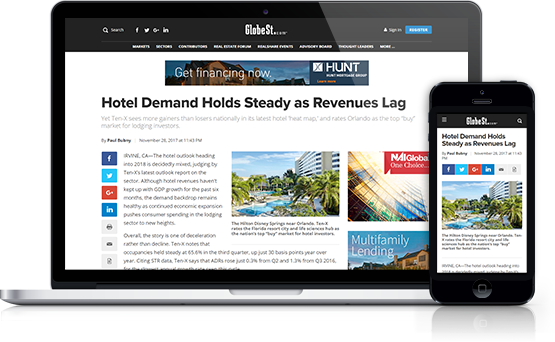CHICAGO—Geoffrey Kasselman, executive managing director and national industrial practice leader for Newmark Grubb Knight Frank here in Chicago, has now run the company's industrial summit for two years. And he tells GlobeSt.com that if the hundreds of participants take away one thing from this week's gathering he hopes it's an appreciation for the speed of changes hitting the industrial sector.
“The digital world and the internet are magnifiers,” he says. “They are driving every facet of the business world faster.” For one thing, the ever-growing ability to analyze huge amounts of data means that developers, users and brokers can spot inefficiencies that in the past may have remained hidden for years. That will result in better decision-making, but it also means everyone in the sector has to be ready to launch the projects needed to fix whatever problems are uncovered.
The rise of e-commerce will also play a role in the industrial sector's speed-up, he adds. For all the talk about e-commerce, its use “is not yet ubiquitous or universal.” And as more companies explore the best ways to use the internet, this will set in motion efforts to “drive inefficiencies out of the entire supply chain.”
Kasselman's impression of the overall state of the US industrial market echoed the optimism expressed by many others at the conference. He expects the robust level of activity seen today will last at least another six months, “but hopefully much longer than that.”
He adds that the extraordinary flow of foreign capital into the industrial sector is the best example of the market's strength. And in 2016 he expects foreign buyers to remain active and continue buying at lower cap rates than domestic investors. The intensifying competition should push the former into secondary regions, and perhaps even in ones considered tertiary. “It will also force domestic capital into other markets, not just New Jersey, Chicago and LA. It's a real game changer.”
Much of the talk at the conference revolved around the Fed and the expectation that it will finally raise interest rates. And according to Kasselman, the issue has been “a yawner.” “It's so widely anticipated that its impact has been priced in. We have room for a couple of upticks.”
Want to continue reading?
Become a Free ALM Digital Reader.
Once you are an ALM Digital Member, you’ll receive:
- Breaking commercial real estate news and analysis, on-site and via our newsletters and custom alerts
- Educational webcasts, white papers, and ebooks from industry thought leaders
- Critical coverage of the property casualty insurance and financial advisory markets on our other ALM sites, PropertyCasualty360 and ThinkAdvisor
Already have an account? Sign In Now
*May exclude premium content© 2025 ALM Global, LLC, All Rights Reserved. Request academic re-use from www.copyright.com. All other uses, submit a request to [email protected]. For more information visit Asset & Logo Licensing.








